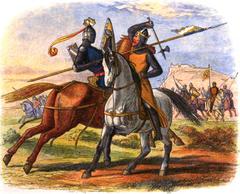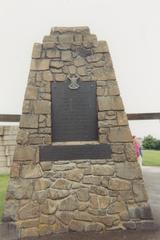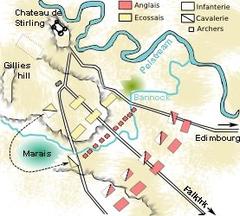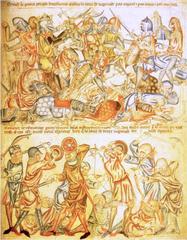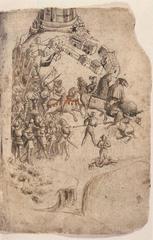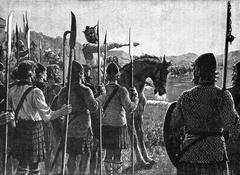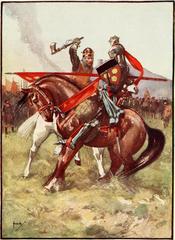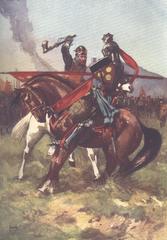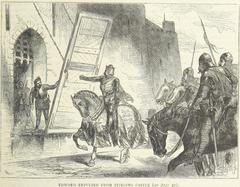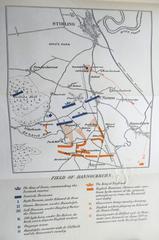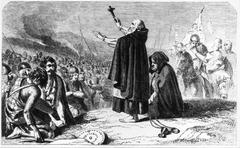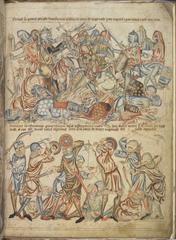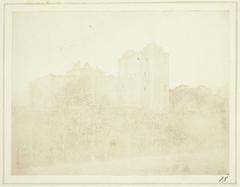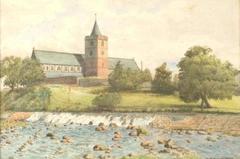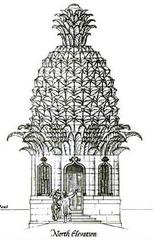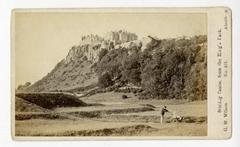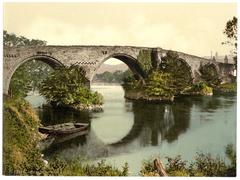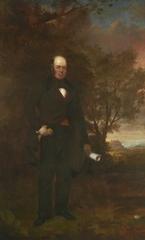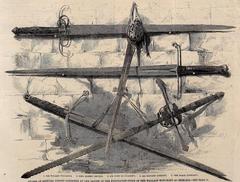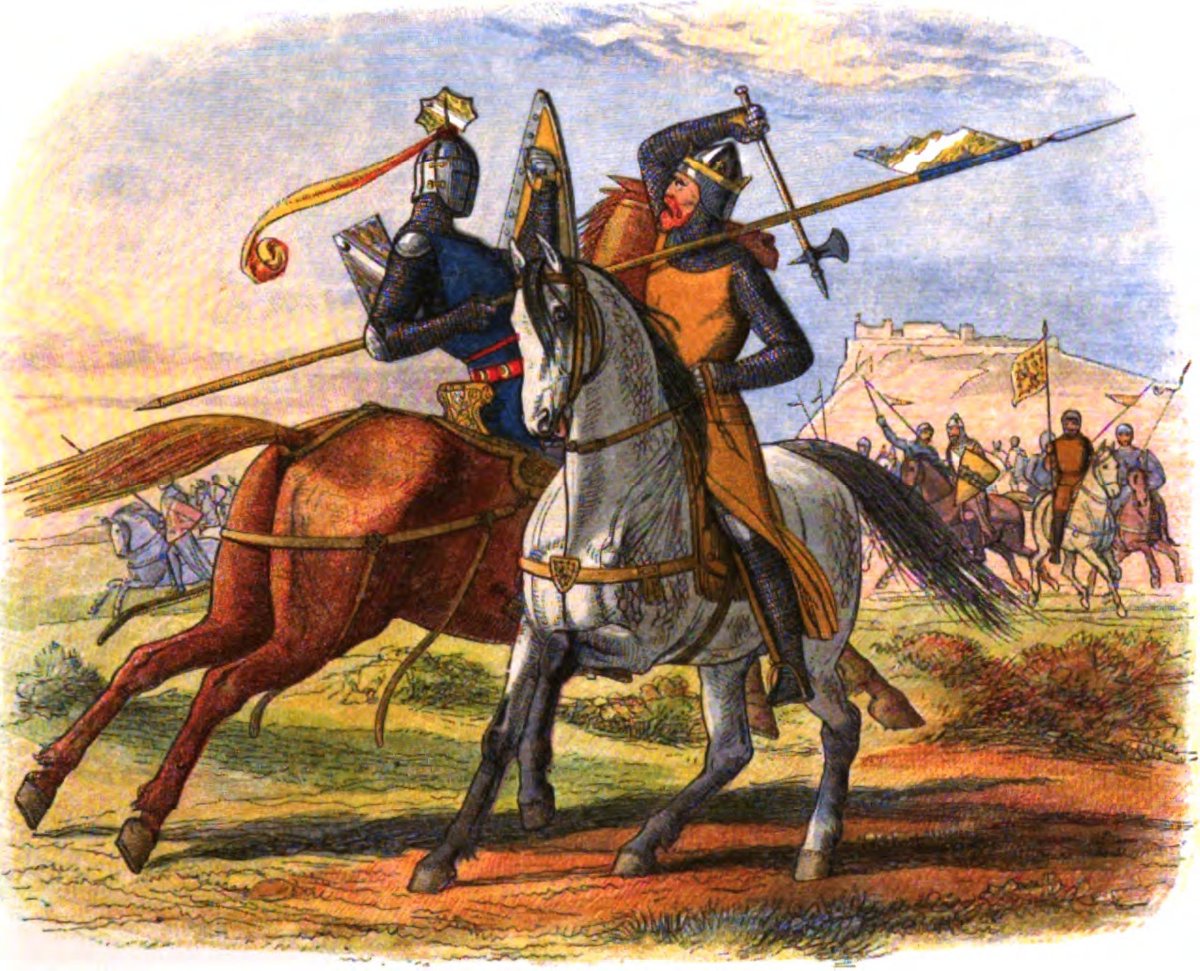
Battle of Bannockburn: Visiting Hours, Tickets, and Historical Sites in Stirling, United Kingdom
Date: 14/06/2025
Introduction
The Battle of Bannockburn is a cornerstone of Scottish history, symbolizing the nation’s enduring quest for independence. Fought in June 1314 near Stirling, this decisive victory by Robert the Bruce over King Edward II’s English forces not only altered the course of the First War of Scottish Independence but also forged a powerful legacy that resonates through Scotland’s identity today. The Bannockburn Battlefield and Visitor Centre now serve as a gateway to this pivotal past, offering visitors a rich blend of historical insight, cutting-edge interactive exhibits, and access to nearby landmarks such as Stirling Castle and the National Wallace Monument.
This guide provides everything you need to plan your visit: from up-to-date opening hours and ticket details to practical travel tips and an overview of both the historical significance of Bannockburn and the surrounding Stirling attractions. Whether you’re a history enthusiast, a family looking for an educational day out, or a traveler eager to explore Scotland’s medieval heritage, Bannockburn promises a memorable experience.
For further details and official updates, consult the National Trust for Scotland Bannockburn page, VisitScotland, and Undiscovered Scotland.
Table of Contents
- Introduction
- Historical Background and Significance
- Visiting the Bannockburn Visitor Centre
- Practical Information
- Nearby Stirling Historical Sites
- Cultural Significance
- Outdoor Grounds and Monuments
- FAQs
- Essential Visitor Information
- Conclusion and Planning Resources
- References
Historical Background and Significance
Origins of the Conflict
Following the death of King Alexander III in 1286 and the extinction of his direct lineage, Scotland faced a succession crisis. King Edward I of England intervened, deposing King John Balliol and occupying Scotland (Undiscovered Scotland). Scottish resistance gradually coalesced under Robert the Bruce, who was crowned King of Scots in 1306.
By 1314, Stirling Castle remained England’s last major stronghold in Scotland, besieged by Edward Bruce. A truce required the castle to be relieved by midsummer or surrender, compelling King Edward II to march north and setting the stage for the battle (Undiscovered Scotland).
Key Figures and Armies
- Robert the Bruce: King of Scots and seasoned guerrilla leader, he commanded around 6,000 motivated Scottish troops.
- King Edward II: Led an English force of 18,000–20,000, but struggled with cohesion and local knowledge (Learning History; War History Online).
Bruce’s strategic use of terrain and defensive tactics proved key against the larger English army.
Strategic Importance of Stirling
Stirling Castle’s position as a “gateway” to northern Scotland made it a critical prize. The Scots chose marshy ground between the Bannock Burn and Pelstream Burn, blunting the effectiveness of English cavalry and utilizing natural bottlenecks fortified with anti-cavalry obstacles (War History Online; Undiscovered Scotland).
The Battle: Day by Day
Day One (June 23):
English troops attempted to cross Bannock Burn but were repelled by the Scots, highlighted by Bruce’s personal defeat of Henry de Bohun in single combat (Undiscovered Scotland).
Day Two (June 24):
Scottish schiltron infantry formations held firm against English cavalry, while Scottish cavalry neutralized English archers. The cramped terrain sowed confusion among the English, leading to a rout and heavy casualties (Learning History; War History Online).
Aftermath and Broader Impact
Scottish victory at Bannockburn shattered English control north of the border, enabled Scottish raids into England, and ultimately led to the Treaty of Edinburgh–Northampton in 1328, which recognized Scotland’s independence (Wikipedia). The battle also influenced military tactics, demonstrating the effectiveness of disciplined infantry against cavalry, and became a symbol of Scottish resistance and identity (Undiscovered Scotland).
Visiting the Bannockburn Visitor Centre
Hours and Ticketing
- Opening Hours: Daily, 10:00 AM–5:00 PM (last admission 4:30 PM). Seasonal variations may apply; always verify with the official site.
- Tickets:
- Adults: £12
- Concessions: £9
- Children (5–15): £6
- Family tickets and National Trust for Scotland member discounts available.
Purchase tickets in advance online to secure your preferred time slot, particularly during peak seasons (NTS Bannockburn Planning Your Visit).
Accessibility
The centre is fully wheelchair accessible with paved paths, accessible restrooms, and designated disabled parking. Sensory backpacks and large print guides are available on request, and familiarisation visits can be arranged for those with additional needs (NTS Bannockburn Planning Your Visit).
Guided and Interactive Experiences
- Immersive 3D Battle Room: Experience the drama of 1314 with surround sound, digital projections, and animated storytelling (Must See Scotland).
- Battle Table War Game: Visitors can command Scottish or English forces in a gamified, strategic simulation led by a costumed “battle master.”
- Guided Tours: Expert historians lead daily tours, and special events—such as reenactments and workshops—are held, especially around the battle’s anniversary in June.
- Virtual Tours: Available both onsite and online.
Facilities and Amenities
- Café: Light meals, snacks, and drinks served daily.
- Gift Shop: Bannockburn-themed gifts, books, and souvenirs.
- Wi-Fi: Complimentary access for visitors.
- Picnic Areas: Landscaped grounds perfect for outdoor breaks.
Practical Information
Getting There
- By Car: Located just south of Stirling, off the A872; onsite parking (including disabled bays) is available (NTS Bannockburn Planning Your Visit).
- By Train: Stirling station is 2 miles away; taxis and local buses provide easy access.
- By Bus: Local routes stop at Milton Brae, directly outside the centre (History Hit Bannockburn).
- By Bike: Bike racks are provided for cyclists.
Travel Tips
- Arrive early to enjoy the grounds before your timed entry.
- Dress for unpredictable Scottish weather.
- Photography is encouraged outdoors; restrictions apply within the immersive exhibits.
- Check for special offers (e.g., ScotRail’s 2-for-1 ticket deal).
Best Times to Visit
- Summer: Ideal for exploring outdoor monuments and attending special events.
- Anniversary (late June): Features reenactments but expect larger crowds.
- Allow 90 minutes for a full visit, including time in the shop and café.
Nearby Stirling Historical Sites
- Stirling Castle: Explore the Great Hall, gardens, and interactive history exhibits.
- National Wallace Monument: Celebrates William Wallace with panoramic views and displays.
- Stirling Old Town Jail: Offers guided and ghost tours.
- Cambuskenneth Abbey: A tranquil, historic abbey site.
- Stirling Smith Art Gallery & Museum: Local art and history collections.
- Blair Drummond Safari Park: Family-friendly wildlife park.
- Loch Lomond & The Trossachs National Park: For scenic day trips and outdoor activities.
Cultural Significance
Bannockburn remains a potent symbol of Scottish resilience, independence, and national pride. The visitor centre presents the battle from a balanced, non-partisan perspective, inviting reflection on the complexities of medieval conflict and its relevance to modern Scottish identity (Must See Scotland; historytools.org).
The battle’s military legacy also influenced European warfare, demonstrating the effectiveness of infantry and inspiring future tactics (oxfordbibliographies.com).
Outdoor Grounds and Monuments
Explore the battlefield’s landscaped grounds, featuring:
- Robert the Bruce Statue: Iconic equestrian bronze sculpture, surrounded by a poetic rotunda and the historic Borestone Cairn (STGA Blog).
- Memorial Park: Marked by informative boards.
- Picnic Areas: Enjoy views and reflection where history was made (Wee Walking Tours Bannockburn).
Frequently Asked Questions (FAQ)
Q: What are the opening hours?
A: 10:00 AM–5:00 PM daily (confirm seasonal changes on the official website).
Q: How do I book tickets?
A: Advance booking is strongly recommended via the National Trust for Scotland website.
Q: Are guided tours available?
A: Yes, both daily and special event tours are offered.
Q: Is the centre accessible?
A: Fully accessible with flat paths, accessible restrooms, and support for additional needs.
Q: Can I bring children?
A: The site is family-friendly, with interactive features and support for children with sensory needs.
Q: Are there discounts?
A: National Trust members enter free; ScotRail offers 2-for-1 ticket deals with valid rail tickets.
Essential Visitor Information
- Address: Battle of Bannockburn Visitor Centre, Glasgow Road, Whins of Milton, Stirling, FK7 0LJ, UK
- Opening Hours: 10:00–17:00 (check website for updates)
- Facilities: Shop, café, restrooms, free parking
- Accessibility: Wheelchair accessible; assistance available
- Photography: Permitted outdoors; restrictions inside immersive exhibits
- Contact: Official NTS Bannockburn page
Conclusion and Planning Resources
A visit to Bannockburn offers more than a walk through a historical battlefield—it’s an immersive journey into the heart of Scotland’s story. With engaging exhibits, expert-led tours, and beautiful outdoor spaces, Bannockburn is a must-visit for history enthusiasts and families alike. Take advantage of the accessible facilities, explore neighboring Stirling sites, and experience the drama and emotion of 1314 brought vividly to life.
For the latest visitor information, ticket bookings, and event updates, visit the National Trust for Scotland Bannockburn page, and explore additional resources such as History Hit and Must See Scotland.
Enhance your visit with the Audiala app for guided audio tours, and follow us on social media for news, events, and inspiration.
References and Further Reading
- Bannockburn Battlefield: Visiting Hours, Tickets, and Historical Significance of Stirling’s Iconic Site, 2025, National Trust for Scotland (https://www.nts.org.uk/visit/places/bannockburn)
- Bannockburn Visitor Experience: Tickets, Visiting Hours, and What to See at Stirling’s Historic Battle Site, 2025, Must See Scotland (https://must-see-scotland.com/bannockburn-visitor-centre)
- Battle of Bannockburn Visitor Centre: Tickets, Visiting Hours & Stirling Historical Sites Guide, 2025, National Trust for Scotland (https://www.nts.org.uk/visit/places/bannockburn/planning-your-visit)
- Battle of Bannockburn Visitor Guide: Visiting Hours, Tickets, and Nearby Stirling Historical Sites, 2025, National Trust for Scotland (https://www.nts.org.uk/visit/places/bannockburn)
- Undiscovered Scotland: Bannockburn Battlefield Overview, 2025 (https://www.undiscoveredscotland.co.uk/stirling/bannockburn/index.html)
- VisitScotland: Bannockburn Visitor Information, 2025 (https://www.visitscotland.com/info/towns-villages/bannockburn-p1423511)
- History Hit: Bannockburn Battlefield Location and Tours, 2025 (https://www.historyhit.com/locations/bannockburn-battlefield/)
- Learning History: Battle of Bannockburn Analysis, 2025 (https://learning-history.com/battle-of-bannockburn/)
- War History Online: The Battle of Bannockburn, 2025 (https://www.warhistoryonline.com/history/bannockburn.html)
- Wikipedia: Battle of Bannockburn, 2025 (https://en.wikipedia.org/wiki/Battle_of_Bannockburn)
